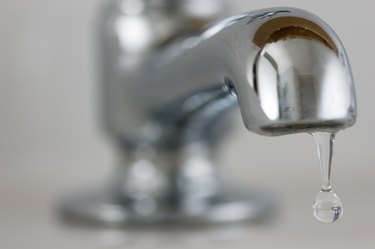Steps to Address Low Water Pressure in Your Home
Steps to Address Low Water Pressure in Your Home
Blog Article
How do you actually feel with regards to Low Water Pressure in the House??

Low water stress in your house can be an irritating issue, influencing whatever from showering to washing meals. If you're experiencing weak water flow, there are numerous possible causes and solutions to discover. In this overview, we'll go over common reasons for low water stress and functional steps to attend to the problem properly.
Introduction to Low Tide Pressure
Low tide pressure happens when the flow of water from your faucets, showers, and other components is weak than common. This can make day-to-day jobs more tough and less efficient. Comprehending the root causes of low water pressure is important to locating the right solution.
Typical Root Causes Of Low Water Pressure
Pipeline Obstructions
Gradually, pipes can end up being obstructed with natural resource, sediment, or debris, restricting the flow of water. This is an usual problem in older homes with galvanized steel pipes.
Corrosion
Corrosion within pipes can cause leaks and decreased water stress. Corrosion build-up can tighten water circulation, especially in maturing plumbing systems.
Faulty Stress Regulators
Stress regulators are in charge of preserving regular water stress in your home. If they malfunction, it can lead to low tide stress or irregular flow throughout your house.
Municipal Water System Issues
In some cases, the issue lies outside your home. Municipal water system issues, such as main line leaks or upkeep work, can briefly lower water stress in your location.
Exactly How to Detect Low Water Pressure
Inspecting Faucets and Fixtures
Start by checking the water stress at different taps and components throughout your home. If the concern is isolated to certain areas, it might indicate local problems.
Checking Pipes
Examine noticeable pipes for indicators of leaks, corrosion, or obstructions. Focus on any kind of unusual noises, such as knocking or rattling pipelines, which could show problems within the plumbing system.
Consulting with a Plumber
If you're not able to pinpoint the reason for low water stress, consider employing a specialist plumber to carry out a thorough examination. They can determine underlying issues and advise ideal solutions.
Do It Yourself Solutions to Fix Low Tide Stress
Cleaning Up Aerators and Showerheads
Natural resources can build up in aerators and showerheads, minimizing water flow. Get rid of and clean these elements regularly to boost water stress.
Flushing Hot Water Heater
Debris build-up in the water heater can restrict flow and minimize effectiveness. Flushing the tank regularly assists eliminate sediment and keep optimal efficiency.
Examining Stress Regulatory Authority
Ensure that the stress regulator is functioning properly. Adjusting or changing the regulator can aid restore correct water pressure throughout your home.
Clearing Clogs in Piping
For small clogs, try making use of a plumbing serpent or chemical drain cleaner to clear blockages in pipelines. Be cautious when using chemicals and adhere to safety and security standards.
When to Call a Professional Plumber
If do it yourself initiatives stop working to solve the issue or if you suspect significant plumbing troubles, it's best to look for support from a qualified plumber. They have the competence and tools to deal with intricate issues securely and successfully.
Safety Nets to Maintain Water Pressure
Routine Upkeep
Arrange routine upkeep for your plumbing system to prevent issues such as rust, leakages, and obstructions. Dealing with minor problems early can help stay clear of more significant repair work later.
Mounting a Pressure Booster
Consider mounting a stress booster pump to improve water stress in locations with regularly reduced circulation. This can be especially helpful for multi-story homes or buildings with high-demand components.
Monitoring Water Usage
Be mindful of water usage practices and avoid overtaxing the plumbing system. Basic modifications, such as astonishing showers and washing loads, can assist keep ample water stress.
Conclusion
Dealing with low water pressure can be frustrating, yet determining the underlying reasons and carrying out appropriate services can restore optimal flow throughout your home. Whether it's cleaning aerators, inspecting pipes, or speaking with a plumber, taking aggressive steps can ensure a constant supply of water for your day-to-day demands.
FOUR WAYS TO FIX LOW WATER PRESSURE NOW
Turning on a shower or faucet only to find the water comes out in a sad, slow drizzle is never a good feeling. How exactly are you supposed to wash a pan or take a quick shower when it takes 10 minutes just to rinse off a little soap? The good news is that when your water pressure is bad, there's always a cause: typically one that can be easily fixed. Here are some of the most common causes of low pressure and what you can do to fix the issue:
DEBRIS AND MINERAL DEPOSIT BUILDUPS
If you notice low water pressure from just one or two of the fixtures in your house, the problem likely has to do with debris buildup. Water is full of minerals and other debris, all of which can accumulate in your pipes and on your fixtures. This can cause a blockage that affects how much water flows through. To fix this, try filling a small plastic bag with white vinegar, and use a rubber band to hang it around your showerhead or faucet. Let the head of the fixture soak for a few hours, and the vinegar should loosen the deposits.
WATER LEAKS
Leaks are another common cause of low water pressure. If water is flowing out of your plumbing through a hole or crack before it can reach your fixture, the pressure coming out of the faucet or showerhead will be lower. A plumbing professional is your best bet for finding and repairing a leak in your water supply pipes.
Leaks are another common cause of low water pressure. If water is flowing out of your plumbing through a hole or crack before it can reach your fixture, the pressure coming out of the faucet or showerhead will be lower. A plumbing professional is your best bet for finding and repairing a leak in your water supply pipes.
FOUR WAYS TO FIX LOW WATER PRESSURE NOW
Turning on a shower or faucet only to find the water comes out in a sad, slow drizzle is never a good feeling. How exactly are you supposed to wash a pan or take a quick shower when it takes 10 minutes just to rinse off a little soap? The good news is that when your water pressure is bad, there's always a cause: typically one that can be easily fixed. Here are some of the most common causes of low pressure and what you can do to fix the issue:
DEBRIS AND MINERAL DEPOSIT BUILDUPS
If you notice low water pressure from just one or two of the fixtures in your house, the problem likely has to do with debris buildup. Water is full of minerals and other debris, all of which can accumulate in your pipes and on your fixtures. This can cause a blockage that affects how much water flows through. To fix this, try filling a small plastic bag with white vinegar, and use a rubber band to hang it around your showerhead or faucet. Let the head of the fixture soak for a few hours, and the vinegar should loosen the deposits.
WATER LEAKS
Leaks are another common cause of low water pressure. If water is flowing out of your plumbing through a hole or crack before it can reach your fixture, the pressure coming out of the faucet or showerhead will be lower. A plumbing professional is your best bet for finding and repairing a leak in your water supply pipes.
Leaks are another common cause of low water pressure. If water is flowing out of your plumbing through a hole or crack before it can reach your fixture, the pressure coming out of the faucet or showerhead will be lower. A plumbing professional is your best bet for finding and repairing a leak in your water supply pipes.
A VALVE ISSUE
If you have low water pressure throughout your home, check your main shut-off valve to make sure it's completely open. You may also want to see if there's a pressure-reducing valve installed. If there is, have a plumber help you adjust the settings to get the pressure you're looking for.
OTHERS USING WATER
Believe it or not, your low water pressure could be caused by your neighbors. If you notice low pressure at certain times of day, it may be because you and the people living next to you have similar schedules - when everyone is showering at the same time, the pressure will be lower in every home. Low pressure throughout the neighborhood may also be caused by an issue with your municipal water supply. If that's the case, call the supplier to see if they're working on the issue.
https://www.rotorooter.com/blog/water-leaking/low-water-pressure-fixes/

We hope you enjoyed our post on 4 Ways to Troubleshoot Low Water Pressure. Thanks so much for taking the time to read through our short article. For those who appreciated our page please do not forget to pass it around. Thanks a bunch for being here. Revisit us soon.
Book Maintenance Report this page